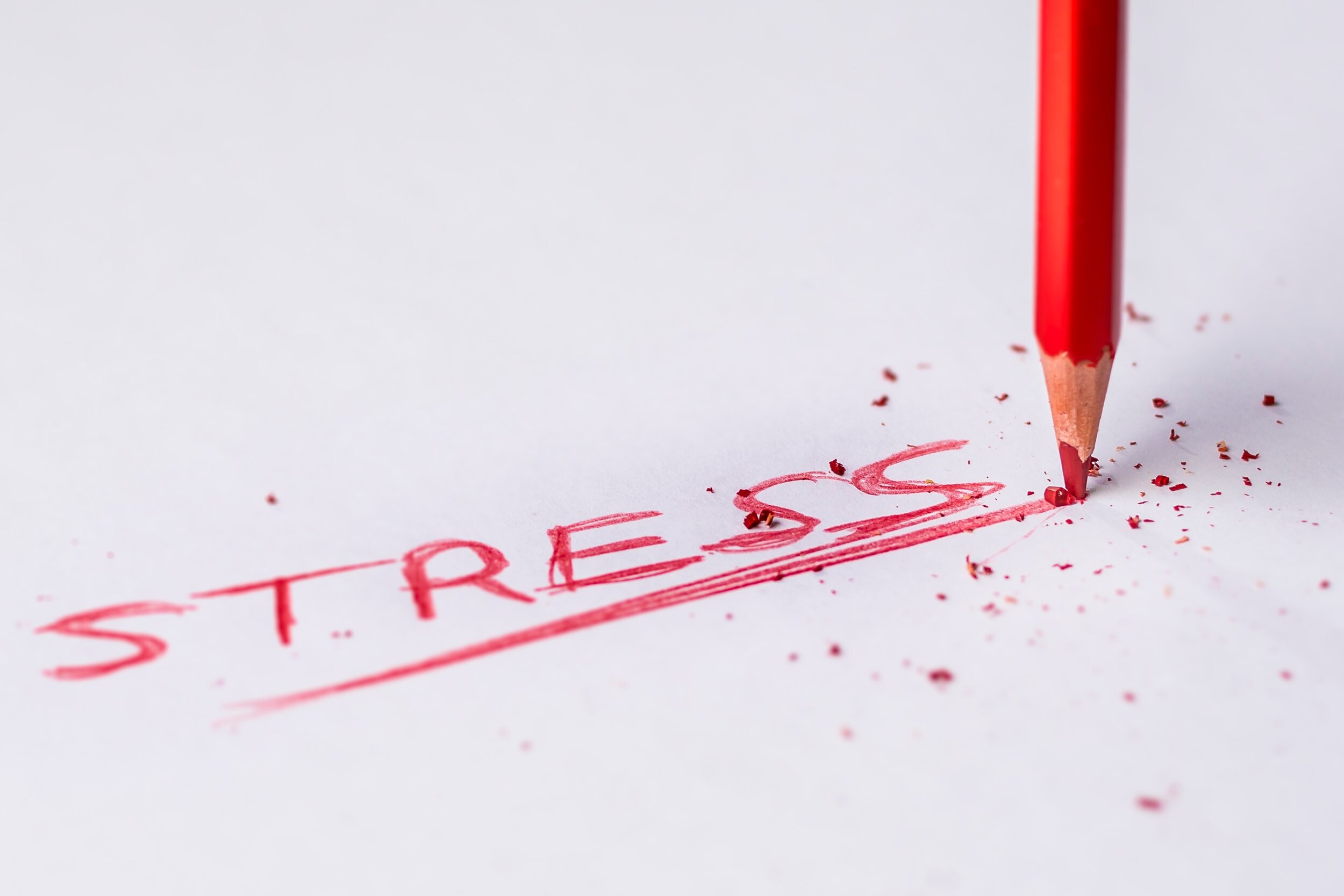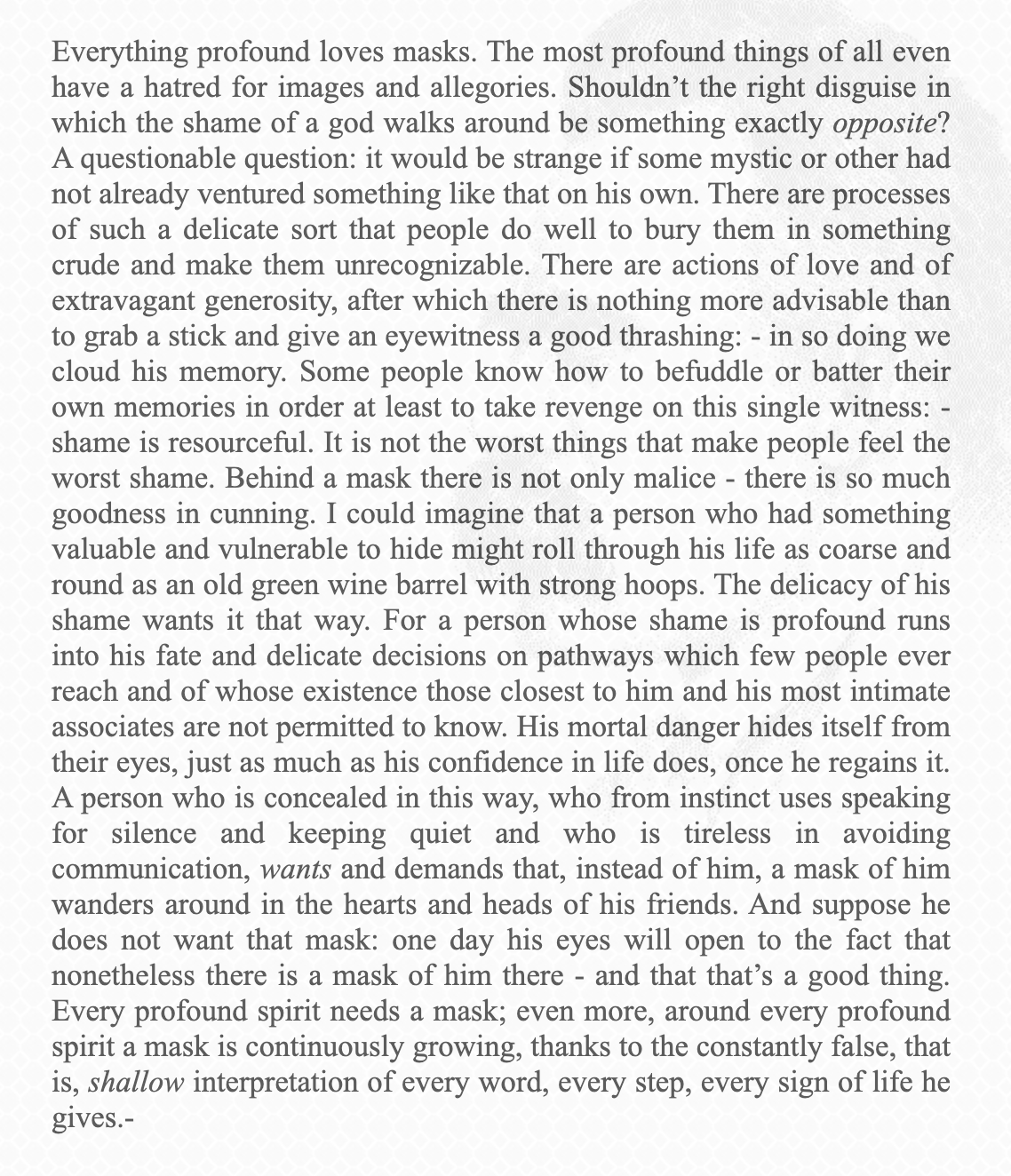Patients often want to know what the best kind of therapy is for anxiety. This is a great question, but in practice it’s often really difficult to give an answer without first knowing more about the person seeking therapy. We find that the right approach to therapy often depends on what type of anxiety the patient is presenting with. The aim of this post is to break down the six most common types of anxiety and explain the types of treatment we would typically recommend for a patient if that were the type of anxiety they were primarily struggling with.
Keep in mind that this list is not exhaustive, there are certainly other ways of drawing these distinctions, and any one person will usually experience more than one type of anxiety. There are also lots of reasons why someone might be better served by an alternative approach to therapy. However, we believe that there is much to be gained from clarifying anxieties along these lines and we hope clinicians and patients alike will find this a useful way to aid in assessment and treatment.
#1 - Fear
You are trying to get to sleep and you hear a noise downstairs (a “bump” in the night). Suddenly you feel unsafe. “Did I lock the door?” … “Is there someone in my house?” … It is normal to feel fear in a situation like this. However, many people feel fear more than they would like to and in situations that do not warrant it.
Irrational fear can impact an individual’s life in significant ways. You may avoid medical care if you experience fear of needles or have other medical phobias (lack of proper preventative care and early diagnoses drastically reduce the lifespans of millions of Americans). Or maybe you wash your hands too many times because you experience fears of germs and of infection (this can cause your hands to dry out, crack, and bleed - leading to eczema and, ironically, to a substantially increased risk of infection).
There are countless things we can find ourselves irrationally afraid of, but whatever the irrational fear there is typically a very real cost to not dealing with it. These fears not only lead to complications in our lives, they also become worse over time if we simply try to avoid what we fear. Failure to deal with our fears can also lead to increased feelings of shame (see section #3 below).
Fear is a primal emotional experience directed toward someone or something. It is a feeling that is often triggered by sensory experiences. A sight, sound, or even a smell might throw us into a state of fear if we perceive in that sensation some form of imminent threat or danger.
Biologically, fear is characterized by spikes in autonomic activation. This means that it tends to come on very quickly. We can become “gripped with fear” when something triggers our perception of threat. These spikes in autonomic activation make it difficult for us to think clearly and we can easily begin seeing things solely through the lens of our fear.
When in a state of fear, the things we are afraid of will typically seem inherently threatening. No explanation is needed. The threat feels obvious and immediate. Because the nature of the threat is viewed as inherent (e.g., "it's just fundamental to flying through the air in a giant tube of metal that you're in grave danger...") reasoning is rarely effective in reducing the fear response (if we’re able to mobilize it at all). This helps explain why psychotherapies such as psychodynamic therapy and cognitive therapy (therapies without behavioral protocols) often fail to produce results in clinical studies of phobias and OCD.
Much of what we think of as “anxiety disorders” fall within the fear sub-type. Those who carry diagnoses of specific phobia, agoraphobia, panic disorder, PTSD, and OCD usually struggle with fear as a central component of their anxiety. In the face of fear, we feel compelled to respond - often these compulsive responses are automatic - and the dominant form of compulsion is usually avoidant in nature.
There may be other ways to address any given fear, but one approach to therapy has distinguished itself as especially helpful for those clients who struggle with fear. This is therapy that leverages behavioral psychology (included as a part of cognitive-behavioral therapy and it’s derivatives such as ACT, PE, ERP, and CPT). We’ve found that through utilizing the toolkit of contemporary behavioral psychology, focusing on gradual and systematic exposure to feared stimuli, the client’s fear response can be diminished greatly in a relatively short period of time - even extinguished entirely in many cases.
The idea of exposure therapy often frightens clients, but keep in mind that contemporary exposure therapies are all about very gradually desensitizing you to the object of fear. Whatever you’re afraid of, you won’t have to face your fears all at once. We start with what’s actually doable - we push you out of your comfort zone little by little until your fear response starts to dissipate.
Keep in mind that there is a difference between rational fear and irrational fear. Rational fears are those fears that accord with our intellectual judgments about what’s really dangerous. They are important because they tend to keep us safe. Irrational fears are fears that we wish we didn’t have, because they keep us from living our lives to the fullest. Behavioral therapy (exposure) only works on irrational fears. This is because it allows our emotional experience to catch up to what we already know intellectually - that despite how dangerous the situation feels (and how real that danger feels), the probability of danger is not nearly as high as it seems. So you don’t have to worry about therapy making you too fearless.
#2 - Worry
"Worry" is far more cerebral than fear. It’s often ruminative, analytical, and apprehensive. Unlike fear, which tends to get triggered by sensations, worry tends to get triggered by ideas. Also unlike fear, which tends to be present focused (focused on what is imminent), worry is usually future oriented (focused on hypotheticals).
It isn't unusual for someone to view their own worry as productive (at least on some level) ... as a form of proactive risk assessment and planning for negative eventualities. When you view your worry in this way, it can give you a sense of control.
Because most things that most people worry about turn out fine, they usually end up feeling relieved once they discover that their worry was false. However, people rarely let themselves believe that (on top of being false) their worry was also unwarranted in the first place. Instead, they end up believing that their worrying helped them narrowly avoid a bad outcome (even when it had no such effect). It’s because they let themselves believe this that they feel relief - and because this relief feels so good it conditions them (through reinforcement) to worry as much or more in the future. This might sound bizarre, but unconscious conditioning is a powerful force that governs much of our lives.
Worry doesn't usually produce emotions that are as intense or acute as a primal fear response. Instead, worry tends to feed into (and be fed by) less acute levels of stress that last longer periods of time. This sustained level of autonomic activation can lead to insomnia, erectile dysfunction, high blood pressure, quasi-panic-states, increase risk of cardiovascular disease and cancer, as well as a number of other health issues (including dementia and suicide).
Everyone worries, and people who struggle with anxiety and anxiety disorders tend to worry more than most. However, those who carry a diagnosis of Generalized Anxiety Disorder usually struggle with worry as a central component of their anxiety. In fact, they may spend more time worrying than doing anything else.
Worry based presentations of anxiety often respond really well to courses of therapy that emphasize new ways of engaging with our thoughts. This could look like cognitive therapy (part of CBT), which tries to directly intervene and change the thinking patterns implicated in our worry. It might also look like acceptance and commitment therapy (a derivative of CBT), a type of therapy that helps us to find more emotional distance from our thinking and choose a meaningful alternative to rumination.
Other effective approaches to treating worry focus on the role that heightened physiological activation plays in the process. That is, increased worrying not only causes us to feel more stressed, feeling more stressed also causes us to worry more. Because this causal relationship goes both ways, we are able to utilize techniques such as progressive muscle relaxation and differential relaxation to effectively interrupt the worry cycle.
Again, it’s important to distinguish between rational worry and irrational worry. A little bit of worry is normal and can be helpful (we need to at least periodically consider ways in which things might not go according to plan). There comes a point, however, at which the costs of worrying start to outweigh the benefits. For chronic worry, there is a high price to be paid, both in terms of the toll that so much stress can exact in terms of missed opportunities and its very real health consequences.
#3 - Shame
"Shame" is a feeling associated with a negative experience of oneself. Most people have some level of shame in their lives (nobody thinks they’re perfect). When shame is healthy and context appropriate, it’s usually just called “humility”. However, shame can show up in an irrational (neurotic) form (similar to irrational forms of fear and worry).
Although mild shame might manifest simply as low self-confidence (a suspicion that you’re not good enough), more severe experiences of shame often present as a sense of worthlessness (a suspicion that you’re not good at all). Those who struggle with shame often are concerned with specific ways in which they might not be good enough. Intelligence and attractiveness are two of the most common things that individuals experience shame about, and this can lead to a preoccupation with these traits in others (comparing ourselves to others).
Because shame is such a distressing and pervasive experience (we are always with ourselves), it is often forced out of awareness by defense mechanisms. Here, a defense mechanism is anything we habitually use to keep ourselves from having to deal with our feelings of shame head on. Denial, intellectualization, and reaction formations are all common examples of these defensive responses to shame.
When our fight-or-flight reaction is triggered, we are likely to become reactive in a way that is distinctive to how we've habitually opted to defend ourselves against these feelings. When these defensive reactions break down, and our negative understanding of self breaks into conscious awareness, a very different (more “vulnerable”, to borrow a term popularized by Brené Brown) aspect of our personality is likely to emerge.
This is the type of anxiety that Alain de Botton is gesturing at when he says that “the largest part of what we call 'personality' is determined by how we've opted to defend ourselves against anxiety and sadness.”
Imposter syndrome, on one end, and many of what we call "personality disorders" on another, can all be viewed through this lens. Psychologists often call these characterological (think “personality quark”) presentations of anxiety. It's the focus on the value we bring to the table and the chronic and global nature of the coping response that are clues to shame lurking underneath (again, we are always with ourselves and concerned more with our status in the world than with just about anything else (we all deeply want to be “good”)).
Workaholism, unrelenting standards (e.g., “perfectionism”), chronic avoidance, pervasive relational dependence (“codependency”), grandiosity (“narcissism”), entitlement, subjugation, and so on are often defense mechanisms (coping responses) that are anchored in a sense of shame (of not being good enough). What makes these responses to life problematic is that they are based on a distorted self-image. If we saw ourselves as we really are, we would be more calm, more confident, and more able to direct our lives toward things we really care about rather than feeling compelled to carry on in this way - always compensating for ourselves.
It may not be the right approach for every client, but shame based presentations of anxiety often respond really well to courses of therapy that emphasize new ways of engaging with significant events and relationships in our lives (especially those from our childhood). Psychodynamic Therapy and Schema Therapy are two approaches that have a proven track record of addressing these issues through helping us re-engage with these events and relationships, as well as with our past.
#4 - Angst
"Angst" isn’t just for teenagers. As the feeling of distress associated with existential disorientation, this particular type of anxiety is often connected with questions like “who am I?” and “who am I supposed to be?”… "should I believe in God?", “how can I really know what’s right and what’s wrong?”, and “how can my life be of any real significance?” We tend to think of these as the questions of adolescence, but this is only because it is in adolescence that we start to develop the abstract reasoning needed to formulate them. Adults also face these questions, and often feel no more prepared to answer them than they did when they were thirteen.
Because these questions are so hard to answer, or even pose in ways that lend themselves to an answer, they tend to get buried. Unlike shame, they tend not to get buried by “personality” defense mechanisms (such as workaholism, perfectionism, avoidance, procrastination, and so on) but instead by ideological ones (such as materialism, nihilism, nationalism, romanticism, and so on) that provide superficially functional but ultimately unsatisfying answers.
These questions and concerns can sometimes become unburied when we are snapped out of our autopilot mode of existence and confronted with the arbitrariness of our lives. We might find angst in the wake of losing faith in the religion we were brought up in, after a near death experience, after receiving a terminal diagnosis, in the wake of divorce, after receiving the promotion we've been working toward for years... and so on. But more often, angst presents as a pervasive, yet subtle, sense of not quite being at home in or understanding the world in which we live (what an academic philosopher might refer to as a feeling of “ontological alienation”).
In writing about the importance of tackling angst head on, Wilfred Sellars writes: “The ideal aim . . . is to become reflectively at home in the full complexity of the multi-dimensional conceptual system in terms of which we suffer, think, and act. I say ‘reflectively’, because there is a sense in which, by the sheer fact of leading an unexamined, but conventionally satisfying life, we are at home in this complexity. It is not until we have eaten the apple with which the serpent philosopher tempts us that we begin to stumble on the familiar and feel that haunting sense of alienation which is treasured by each new generation as its unique possession. This alienation, this gap between oneself and one’s world, can only be resolved by eating the apple to the core; for after the first bite, there is no return to innocence. There are many anodynes, but only one cure.”
It may not be the right approach for every client, but angst based presentations of anxiety often respond really well to courses of therapy that emphasize philosophical exploration. Existentialism is a school of thought within philosophy that explicitly tackles these questions, but a broad knowledge of philosophy and history can be especially helpful when working with such clients - as topics such as ethics (and meta-ethics) as well as epistemology and the history of ideas can all play into helping these clients orient themselves... indeed, pulling from literature, from critical theory, from religious studies, and from other parts of the humanities can be tremendously useful and transformative in therapy with such clients.
Treating angst well is very much an under-appreciated challenge in our field (in Clinical Psychology) - and these clients sometimes struggle to find therapists that are a good fit. Keep in mind that for religious individuals, often pastoral counseling or another form of guidance based in their faith tradition can be helpful. For non-religious individuals, finding a therapist that has extensive training in existential psychotherapy can often be helpful.
#5 - Stress
"Stress" is a biological and psychological response to challenges in one's environment. What's distinctive about stress is that it isn't, strictly speaking, irrational. That is, it isn't the result of unconscious mental machinations or distorted thinking patterns, nor is it about existential disorientation - it's about confronting a set of concrete challenges.
Someone who isn’t struggling with irrational fears, doesn't chronically worry (even if they have to think a lot to deal effectively with the challenges they're facing), is generally a confident person (doesn’t struggle with shame), and knows what their values are and what their life is all about (doesn’t struggle with angst) - this person can still walk in the door of our clinic with lots of anxiety - though we might say that this is “just stress" if it seemed like a mostly normal reaction relative to the challenges they're facing (e.g., if they're the director of a non-profit trying to save the wetlands and Scott Pruitt just got nominated to head the EPA and vowed to slash their budget... they have legitimate things to be worried about... but it's not "worry" in the pathological sense that's happening here... they aren't inventing a catastrophe... they're actually facing one).
It may not be the right approach for every client, but stress based presentations of anxiety often respond really well to courses of therapy that emphasize wellness coaching and humanistic therapy (non-directive person-centered supportive counseling).
Note that while coping skills training can be anti-therapeutic for fear based anxieties (serving as a means of avoidance and negative reinforcement that make the fear worse over time) ... coping skills are actually a perfect fit for clients who are primarily struggling with stress. Mindfulness training and learning breathing exercises are just a couple of the many helpful approaches to coping better that someone might explore with their therapist as they work to reduce their stress level.
Also, while supportive counseling is often derided as an ineffective approach to treating anxiety disorders, it’s arguably the most helpful approach for ameliorating stress. Because the client doesn't have a thought or mood disorder, the therapist is probably doing their job best here when they don’t act as if the client had one. Instead, they can help the client by providing a warm and empathic ear, help them unpack and organize the complex tangle that their life has become, get things off their chest, clarify the issues that they’re facing, so they feel more equipped to tackle these challenges and don’t have to feel like they’re carrying this burden alone.
#6 -Tension
"Tension" is a relational phenomenon that can develop between couples as well as family members or co-workers. It's often specific to one person or a small group of people and is sometimes detectable even by those who aren't participating in it - the dysfunction infects the atmosphere - you can feel it (sometimes right when you walk into a room). This is the type of anxiety people often describe as “like walking on eggshells.”
Tension might be as simple as one miscommunication or as complex as layers of resentment built up over time. Because of the way we participate in it, it's difficult for us to have objectivity and to be able to work on it productively with the person with whom we are in tension. This is where couple's therapy or family therapy becomes an ideal solution. Here, a skilled guide in relationships can provide a more objective take, point out things that either party was perhaps not noticing, and help the parties to begin the work of seeing each other again and healing the wounds that have been created up to that point.
These tensions aren’t always able to be healed, but if both parties are willing to be vulnerable and want things to get better - then there’s a good chance that things will improve with the right help. But keep in mind that the sooner you work to resolve these tensions, the better. The average couple waits six years after becoming unhappy before they choose to pursue couples counseling. The more time goes on the more these relational tensions deepen, resentments build upon resentments and insecurities upon insecurities, making them more difficult to resolve.
40 years ago, couple’s counseling was about 50% effective at resolving these tensions and saving relationships. In the last 40 years, advances in Psychology have allowed us to bring that number up to around 75%. Modern approaches such as EFT and the Gottman Method have hundreds of rigorous studies backing up their effectiveness.
Thanks for tuning in Seattle!






